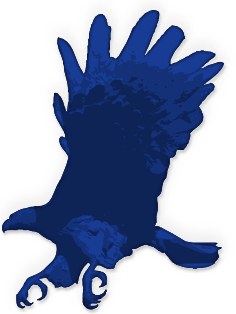Military Veterans

William (Bill) Robert Munford
Date of Birth
Date of Death
Brick Location
Panel Number

Biography
Seaman Second Class Bill Munford saw much action in the U.S. Navy during World II. His ship, the USS Iowa, participated in numerous campaigns including Asiatic-Pacific Campaign, Philippine Liberation.
Service with Battleship Division 7, Admiral Lee
USS Iowa (BB-61) ("The Big Stick") was the lead ship of her class of battleship and the fourth in the United States Navy to be named in honor of the 29th state.
During World War II, Iowa was the only ship of her class to have served in the Atlantic Ocean during World War II.
When transferred to the Pacific fleet in 1944, Iowa shelled beachheads at Kwajalein and Eniwetok in advance of Allied amphibious landings and screened aircraft carriers operating in the Marshall Islands.
From 29 January to 3 February, she supported carrier air strikes against Kwajalein and Eniwetok atolls. Her next assignment was to support air strikes against the major Japanese naval and logistics base at Truk, Caroline Islands. On 21 February, she was underway with the Fast Carrier Task Force while it conducted the first strikes against Saipan, Tinian, Rota, and Guam in the Mariana Islands.
On 18 March 1944, Iowa, joined in the bombardment of Mili Atoll in the Marshall Islands. She then supported air strikes against the Palau Islandsand Woleai of the Carolines for several days.
In the opening phases of the Mariana and Palau Islands campaign, Iowa protected the American carriers during air strikes on the islands of Saipan, Tinian, Guam, Rota, and Pagan Island. On 19 June, in an engagement known as the Battle of the Philippine Sea, Iowa, helped repel four massive air raids launched by the Japanese Middle Fleet. This resulted in the almost complete destruction of Japanese carrier-based air-forces, with Iowa claiming the destruction of three enemy aircraft.
Throughout July, duties included protecting the carriers during air strikes against the Central Philippines to neutralize enemy air power for the long awaited invasion of the Philippines. She supported air strikes against Luzon and continued this duty during General Douglas MacArthur's landing on Leyte on 20 October.
In a last-ditch attempt to halt the United States campaign to recapture the Philippines, the Imperial Japanese Navy struck back with an attack aimed at the destruction of American amphibious forces in Leyte Gulf. Iowa accompanied TF 38 during attacks against the Japanese Central Force.
The reported results of these attacks and the apparent retreat of the Japanese Central Force led Admiral William "Bull" Halsey to believe that this force had been ruined as an effective fighting group.
Bombardment of Japan
Iowa sailed on 19 March 1945 for Okinawa. From 24 April, Iowa supported carrier operations which aimed to establish and maintain air superiority for ground forces during their struggle for the island. She then supported air strikes off southern Kyūshū and participated in strikes on the Japanese home-islands destroying steel mills and other targets. The city of Hitachi on Honshū was shelled beginning the night of 17 July and lasting to 18 July. Iowa continued to support fast carrier strikes until the cessation of hostilities on 15 August as a result of the atomic bombings of Hiroshima and Nagasaki.
On 27 August, Iowa and her sister ship USS Missouri oversaw the surrender of the Yokosuka naval district.Two days later, she entered Tokyo Bay with the occupation forces. After serving as Admiral Halsey's flagship for the surrender ceremony on 2 September 1945, Iowa remained in the bay as part of the occupying force. As part of the ongoing Operation Magic Carpet, she received homeward bound GIs and liberated US prisoners of war before departing Tokyo Bay on 20 September, bound for the United States.
Branch:
Rank
Seaman Second Class
Years
World War II—8 January 1944 - 13 June 1946
Duty
Gunner's Mate, USS Iowa

